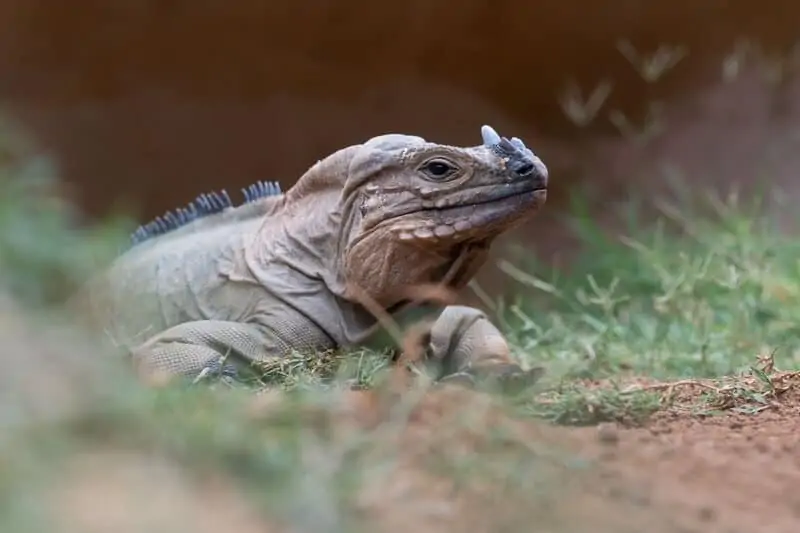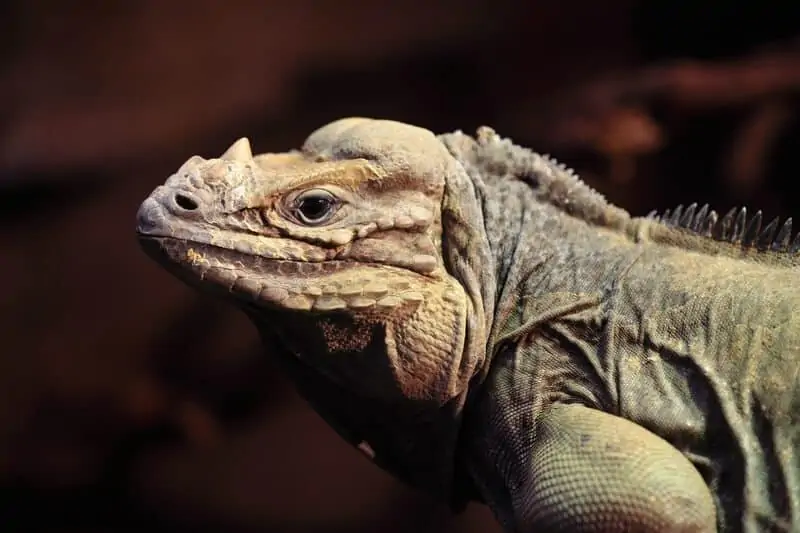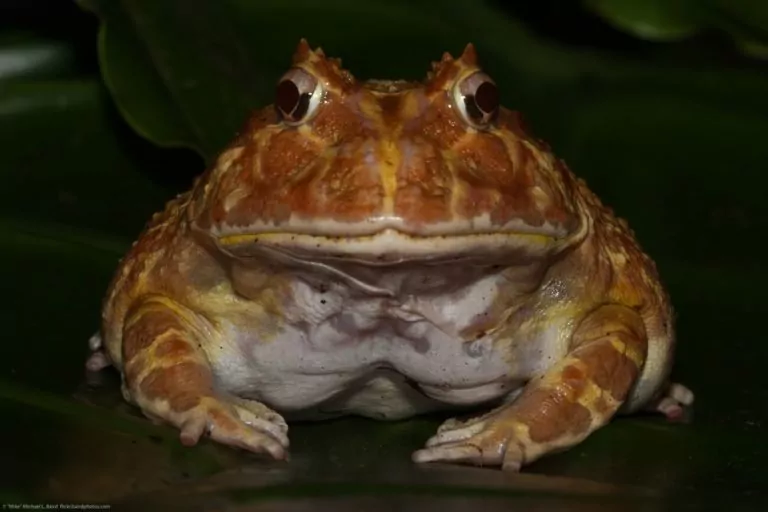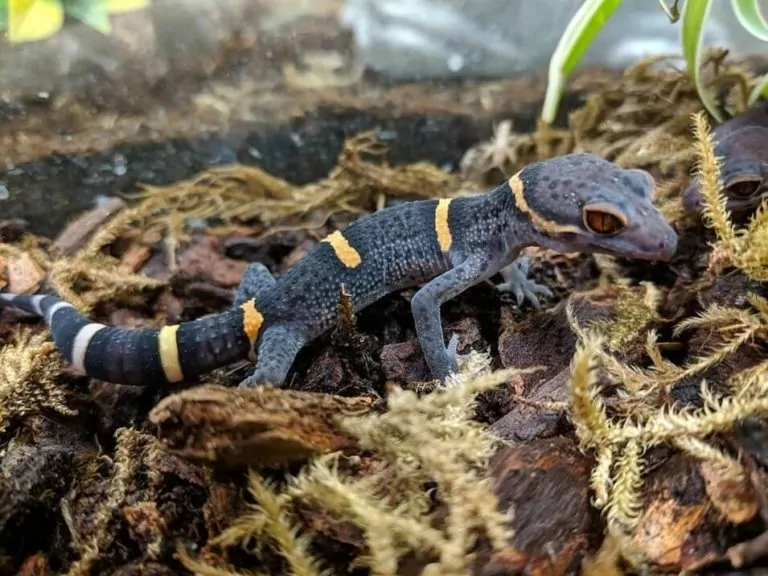Rhino iguanas are fascinating and unique reptiles that can make great pets (for the right kind of owner). However, they’re often misunderstood.
This guide will cover everything you need to know about rhino iguana care, plus some other interesting facts about this amazing species.
Table of Contents
Species Summary
The rhino iguana (Cyclura cornuta) is an intimidating reptile known for its signature prehistoric look.
While other types of iguanas are colorful tree-dwellers, this species prefers to stay low and blend in with the dull coloration of rocks and dirt. Like the enormous mammals it’s named after, the rhinoceros iguana is sporting some unique head details that only further its menacing appearance.
These enormous lizards are native to the Caribbean islands of Hispaniola, Haiti, and the Dominican Republic. Unfortunately, their numbers in the wild are waning. Rhino iguanas are endangered, so owning a wild-caught specimen is impossible.
Luckily, captive-bred lizards are available in the pet trade. They are rare and fetch a pretty penny, but they make lovely pets to those who have the patience and means to own one!
Appearance & Colors
One of the first things you’ll notice about the rhino iguana is its somewhat drab coloration. When most people think of iguanas, they imagine those colorful jewel-toned beauties you see climbing treetops! Rhinos are the complete opposite of those species!
Their bodies are usually dull brown, murky green, and steel gray. In most cases, these iguanas will have a combination of those colors. It’s the perfect camouflage effect to help the lizard blend in with rocks, sand, and leaf litter.

Despite their muted coloration, rhinoceros iguanas are anything but boring-looking! Take one look at the lizard’s head, and you’ll see why it has its colorful name.
Rhino iguanas have a horn-like protrusion on their heads. Some iguanas even sport multiple horns, giving it a similar look to a rhinoceros. You’ll notice that the head even has a similar shape to the mammal.
With the pseudo horn and dull gray skin, these reptiles look like they could be related to the awe-inspiring beast!
The rest of the body is equally interesting. Rhino iguanas look almost prehistoric because of their triangular heads and the long row of spines lining the back.
The legs are pretty thick and muscular, too. Look closely, and you’ll see dexterous fingers and a set of sharp claws!
Rhino iguanas do exhibit some sexual dimorphism. It can be tough to spot the differences when viewing males and females separately. However, the distinct features are apparent when you compare them side by side.
Males are much larger and bulkier. They usually weigh more and take on more body mass overall. The head has more bulk as well. The horn-like protrusions and the jowls are more prominent.
Expert Tip: Typically, juvenile males and females look identical. The only way to sex them is to use a probe or X-ray imaging.
Rhino Iguana Lifespan
Rhino iguana care is a big commitment, because you’ll likely have these pets for a while. While there’s no way to guarantee any animal’s life expectancy, we can look to others to get a general idea of what to expect.
The typical rhino iguana lifespan is about 10 to 15 years in the wild, but they can live upwards of 20 years in captivity! Those cases are pretty rare, as the average is about 16 to 17 years.
Expert Tip: Many factors impact life expectancy, so there’s no way to know just how long you can expect to have them around. That said, the quality of care you provide can play a big part in your lizard’s overall health. Providing top-notch care, a high-quality diet, and a perfectly managed habitat can make all the difference.
Average Size
One of the biggest challenges when caring for a rhino iguana is managing its size. These lizards get pretty big!
The average rhino iguana size is about 4.5 feet long! There are rare cases of these iguanas growing bigger, but around 4.5 feet is the norm.
They start out relatively small as juveniles, matching the size of other iguana species. For this reason, unknowing reptile enthusiasts bring them home without being fully prepared for adult life!
Expert Tip: The good news is that rhinoceros iguanas take a few years to get to their maximum size. They have a slow growth rate, taking three years or more to reach maturity. That gives you plenty of time to make adjustments and find the perfect habitat to accommodate their needs.
Rhino Iguana Care
There’s no getting around it, pet rhino iguana care can be a handful. Their sheer size is enough to make this an unattainable pet lizard species for many. Pair that with the reptile’s moodiness, and it’s easy to say that rhinoceros iguanas aren’t for everyone.
That said, reptile enthusiasts with the time, patience, and means to raise this species can find the experience very rewarding. Like all reptiles, rhino iguanas have a core set of needs you must fulfill. Once you get those covered, half the battle is already won!
Here are some care guidelines to get you started.
Enclosure Size
Let’s start with one of the most challenging aspects of rhino iguana care, finding a suitable enclosure. With an average length of 4.5 feet, standard terrariums won’t cut it.
Youngsters can live in smaller habitats for the first six months to a year. A standard reptile terrarium that measures 24 inches long by 36 inches wide and 18 inches tall will suffice for juveniles.
However, we recommend upgrading to an adult-sized enclosure as soon as you can.
An adult rhinoceros iguana will need an enclosure that’s at least 96 inches long, 48 inches wide, and 48 inches tall. That’s the bare minimum! If possible, it’s a good idea to go a bit bigger with the width and height.
In most cases, owners have to custom-build habitats. You have several options when it comes to material and style.
The best type of enclosure will have solid walls with at least one clear window. Glass and acrylic do a fantastic job of maintaining humidity levels. Just make sure there are vent holes to increase circulation when needed.
If solid walls aren’t possible, you can use a screen or mesh material. Be wary of metal wire. Some iguanas do fine with it, but others will injure themselves frequently. It’s best to go with a soft material if you can.
Expert Tip: Open walls will require more stringent humidity and temperature controls. But if you live in a temperate climate that fits iguana’s needs, they can be a fantastic choice. Owners living in a tropical environment can even consider building an enclosure outdoors.
What To Put In Their Habitat
Rhino iguanas aren’t super picky, but they do like to have an environment that simulates their wild habitat. To begin, start with a thick layer of the substrate material.
The best substrate for this lizard is coconut fiber or a commercial reptile soil mix. You can use a reptile carpet, newspaper, or paper towel. However, we recommend using those materials only when you’re in a pinch.
Rhino iguanas like to dig, so having a particulate to move through is always better. Lay a thick layer that encourages exploration.
On top of the substrate, add some rocks, branches, and vines. You can use thick branches to create a small network of climbing surfaces. Wooden perches supported decks, and hanging hammocks are great, too.
Expert Tip: There’s no need to go all out with the vines and branches. While other species need to climb high to stay happy, rhinoceros iguanas aren’t vertically inclined. They’ll climb what’s available, but they like to stay pretty close to the ground.
Last but not least, don’t forget a hiding spot. These iguanas appreciate having a sheltered space to slink off whenever they feel anxious or overwhelmed. You can use a fake sculpted cave, a wooden hide box, or even an overturned cardboard box.
It’s also a good idea to place some foliage here and there. While not as private as a hide box, the plants will offer ample coverage as they explore their home.
Temperature & Lighting
Next to the enclosure itself, lighting is one of the most important elements of rhino iguana care. The lights will control the temperature and set your lizard’s internal clock. Rhino iguanas are diurnal, so a normal day and night cycle is necessary.
There’s a good chance that you’ll have to use multiple lights to cover the entire habitat. Plus, you’ll need UV lights.

UV lamps provide UV rays, which your lizard would typically get from the sun. Because they live indoors, you have to use these unique lamps to replicate the exposure. Without them, the iguana can experience a slew of health problems (more on that later).
The UV lamps should be a separate system from the normal lights. You cannot see the UV rays coming from the lamps. They’ll look like they’re off, so we recommend putting them on a timer to avoid any hiccups.
Now, let’s talk about temperature.
Rhino iguanas do best with an ambient temperature range between 80 and 85 degrees Fahrenheit. At night, temperatures can dip to 75 degrees. If it gets any lower, you’ll need to use a heat emitter to keep things stable.
Once you have the ambient temperature set up, there’s still more work to do! Like most reptiles, rhinoceros iguanas need a temperature gradient for thermoregulation. In the wild, they’ll move from cool areas to hot ones as their body temperature changes.
To facilitate that behavior in captivity, you must have a “cool” and a “hot” side. The cool area will be your ambient temperature setting. On the opposite end of the enclosure, set up a basking lamp.
The basking lamp will raise temperatures in that one area of the enclosure. You can place it above a basking platform so that your lizard soaks up as much of the heat as possible! Just make sure that they cannot touch the lamp and burn themselves.
The basking spot should be around 106°F. Some lizards will prefer closer to 95 degrees. Others can handle as much as 115! Experiment a bit until you find a setting your lizard enjoys.
Humidity
Rhino iguanas come from the humid jungles of the Caribbean. High humidity levels are constant, so you must recreate that feeling in captivity.
Invest in a hygrometer that you can place inside the enclosure. Humidity levels should be between 60 and 70 percent at all times.
If you need to raise the humidity, spritz the enclosure once or twice a day. The substrate will absorb a lot of the moisture and slowly release it throughout the day. The same goes for any plants you might have in the habitat.
Expert Tip: To automate the process, you can install an electronic mister. It’s a worthy upgrade that will help you avoid any humidity issues.
To lower humidity levels, simply increase air circulation. You can do that by opening up some vents to promote evaporation.
Water
You can’t forget about the water! Rhino iguanas may or may not lap up water to drink. Some lizards learn to do that while others don’t.
Either way, you must include a large water bowl in the habitat. Iguanas use those bowls to soak moisture in their skin and stay hydrated. Many will also take advantage of the cool water for thermoregulation and shedding.
The bowl should be big enough to fit the entire iguana. That’s a tall order considering the rhinoceros iguana’s massive size. However, it’s a necessity you must accommodate. Keep the bowl shallow and fill it up with cool water daily.
Don’t be surprised if your iguana defecates in the bowl. It’s a natural response. Simply clean it up, refill the receptacle, and continue to keep an eye on it.
It’s important to monitor the water conditions regularly and address messes as they come. Bacteria can become an issue if you don’t clean the bowl regularly.
Food & Diet
Rhino iguanas may look big and tough, but they’re not big meat-eaters.
They will accept protein from time to time. In fact, they seem to enjoy crickets and other small insects. However, their bodies aren’t meant to process a ton of protein. As a result, those meaty snacks should make up only a tiny fraction of their diet.
The same goes for fruit. Fruits can be a valuable source of vitamins and antioxidants. However, the sugar content can cause trouble if you’re not careful. To avoid gastrointestinal upsets, fruit should be no more than 10 percent of your lizard’s weekly diet.
The brunt of your rhino iguana’s meals should be leafy greens and vegetables. Here are some good food items to incorporate into your reptile’s meals:
- Kale
- Turnip greens
- Mustard greens
- Squash
- Romaine lettuce
- Cucumber
- Dandelion greens
- Carrots
- Peas
- Green beans
- Beets
- Sweet potatoes
For occasional snacking, you can try:
- Apples
- Bananas
- Mangoes
- Plums
- Blueberries
- Raspberries
- Avocado
- Okra
- Crickets and other insects
Of course, you can also provide commercial reptile meals. Just make sure that it provides a balanced and complete diet.
The best way to feed a rhino iguana is to mix up many food ingredients into a salad. Provide enough food that your iguana can eat in a few hours. Then, remove any leftovers.
Expert Tip: To keep your lizard interested, cycle foods throughout the week. Avoid supplying the same thing over and over again.
Provide vitamin D3 and calcium supplements every other meal. Most come in powder form, making it easy to dust food items. They will keep your iguana’s health in check and avoid potentially disastrous health problems.
Potential Health Issues
There are no species-specific health problems that plague rhino iguanas. However, they can suffer from all the usual ailments that plague captive reptiles.
One of the worst health problems you want to avoid is metabolic bone disease. This disorder occurs when reptiles cannot synthesize calcium properly. They require UV rays to process the mineral.
Without it, the bones become frail and deformed. Fractures and full-on breaks become common as reptiles risk injury anytime they move.
Fortunately, you can avoid metabolic bone disease by ensuring that your UV lights are always working and providing the supplements we mentioned earlier.
Other common issues to be wary of include:
- Respiratory infections
- Bacterial problems
- Soft shedding.
Shedding is a regular occurrence. It happens more frequently with growing lizards. Some reptiles encounter issues and have difficulty removing skin from the tail, eyes, and face. Usually, this occurs because the humidity is too low.
Respiratory problems happen when humidity or temperature settings are off. Inflammation can occur in the nose and throat, causing mucus and discharge to flow freely. Stay on top of the enclosure conditions to avoid these complications.
Bacterial issues will cause infections on the skin. In most cases, they are a result of poor hygiene. Make sure to spot clean messes and pick up any waste.
Expert Tip: About once a month, use a reptile-safe disinfectant to clean the enclosure top to bottom. That should help keep bacteria under control.
Behavior & Temperament
For the most part, rhino iguanas are pretty docile. Compared to other species, they are much less likely to attack or show aggression.
That said, they are fully capable of doing damage. Rhinoceros iguanas have strong tails they can whip back and forth. They can do so with enough power to cause welts.
Meanwhile, their teeth can rip through the skin and create significant lacerations. It’s not uncommon for bites to require stitches!
When you’re handling your rhino iguana, make sure to keep an eye on their demeanor. Learn to read their body language and give them plenty of space if they appear to be stressed out.
Avoid putting more than one rhino iguana in the same enclosure. Males are particularly aggressive towards one another due to their territorial nature. Housing them together is just asking for trouble!
Handling Them
Rhino iguanas do fine with occasional handling. But, they must be well-socialized first. Lizards around humans frequently are more inclined to accept handling and touching.
Start handling your pet early to get them used to the sensation. Be extra careful and never hold the lizard by its tail. Rhinoceros iguanas can drop their tail when necessary, but they can only do it once. Dropped tails won’t grow back.
As your iguana reaches adulthood, they should be more than comfortable with your touch. Regardless of their socialization, keep an eye on their mood.
Rhino iguanas can get moody in an instant when bothered. If that happens, gently put them back into the enclosure and give them space.
Conclusion
Rhinoceros iguanas are some of the more unique and interesting species of reptiles you can own. With their unique looks and massive size, this is a pet that will make quite an impact on your life!
We hope you found this care guide helpful. If you have questions about any of the info and facts above, send us a message. We’re always happy to help!


